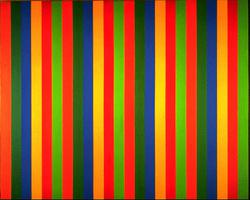Guido Molinari, painter (b at Montréal 12 Oct 1933, d there 21 Feb 2004). He studied briefly at the School of Design at the Montreal Museum of Fine Arts (1950-51), and began making drawings and paintings combining


Enter your search term
Signing up enhances your TCE experience with the ability to save items to your personal reading list, and access the interactive map.
Create AccountOur team will be reviewing your submission
and get back to you with any further questions.
Thanks for contributing to The Canadian Encyclopedia.
CloseArticle
Article by Marilyn Burnett
Published Online May 25, 2008
Last Edited March 4, 2015

D. Burnett, Quantificateur (1979); P. Théberge, Guido Molinari, (1976).